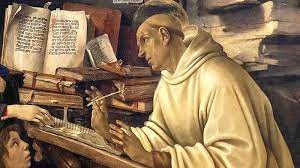Medieval biographer Matthew Paris reports that the joy at the heir's birth turned sour for some, as Henry made it clear that the messengers sent throughout the realm to announce the birth were supposed to return laden with gifts for the occasion.
Kings and queens did not raised their own children, and Edward was ensconced in his own chamber at Windsor before the end of that summer, and put in the care of Sybil de Cormeilles, who had been Queen Eleanor's midwife and her husband, Hugh Giffard. He also had two wet nurses, Alica and Sarah; the "staff" for the royal babe was rounded out by Walter de Day, a clerk appointed to assist Giffard.
Because it is good for children to have playmates, Edward was joined by a cousin (whose mother died in 1240), two sons of a crossbowman in the king's service, and the son of one of Henry III's knights, Nicholas de Molis.
In October 1242, when Edward was three years old, his father ordered the constable of Windsor to provide two tuns* of good wine for the children, because he had heard that they had no good wine to drink. Also that year the sheriff of Gloucester was ordered to procure 15 lampreys to be sent one by one to the prince's "household." Scarlet robes with fur trim followed for Edward and his one-year-younger sister Margaret, and saddles made with two seats, so they could be taken on rides.
Edward grew tall and athletic, ultimately reaching 6'2" and earning the nickname "Longshanks"; nevertheless, he was frequently ill in his youth. In 1246 he was so ill while the whole family was traveling that his mother stayed with him for three weeks at the abbey where they were housed. The following year Henry asked all religious houses to pray for his health when he fell ill yet again.
We know nothing of his education, but he of course spoke French. He had some knowledge of Latin and could speak at least some English. Whether he could read or write is unknown; he would have had scribes for all his thoughts and proclamations. It was more important that he learn martial skills and knowledge of politics. He was armored and weaponed at the age of 17 for his first tournament in 1256, and remained unscathed despite reports of many injuries. It is uncertain whether his skill or his opponents' respect for his status won that day.
His first years were financed by the Exchequer, but eventually he would be granted the revenues from lands the king held. One of his first grants was the Duchy of Gascony, although he gained no revenue because the 6th Earl of Leicester, Simon de Montfort, had been made its governor.
The Song of Lewes, a Latin poem celebrating Simon de Montfort's victory against Henry and Edward at the Battle of Lewes, refers to Edward as a leopard. It was not meant to be complimentary, which I will explain in the next post.
*A tun was the equivalent of four hogsheads; a hogshead equalled 63 gallons.




























